If you are an online gamer, your utmost priority would be to minimize latency as much as possible. Any sign of latency can exacerbate your experience and can cost your precious K/D Ratio. In this post, we will learn how to reduce latency for gaming on a Windows 11/10 PC.
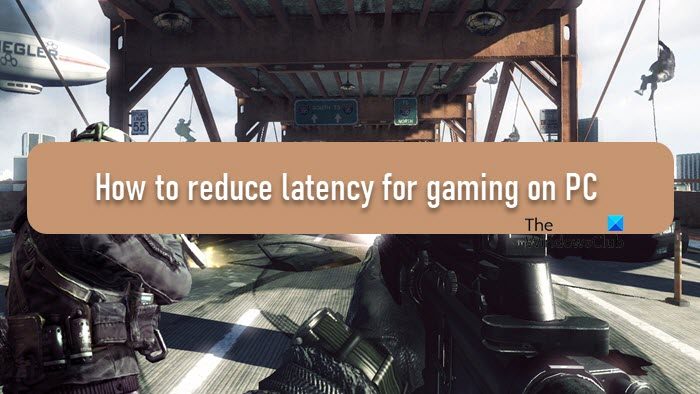
How to reduce Latency for Gaming on Windows PC
Follow the instructions below to reduce latency when gaming on your Windows 11/10 computer.
- Reduce the resolution of your game
- Use an Ethernet cable
- Set up the Ultimate Performance Power Plan
- Lock all driver DPC to one core
- Force your CPU to run at full throttle at all times
- Close all the network-consuming application
- Use NVIDIA Low Latency Mode
Let us discuss them in detail.
1] Reduce the resolution of your game
First, you need to reduce the resolution of the game you are playing. Doing so will not only put less pressure on your GPU when it’s trying to render those pixels but also require a lot less bandwidth.
Every game has a method of lowering the resolution, but most do so through the in-game settings. Do that, and you will notice an improved latency.
Read: How to use NVIDIA Reflex to fix Low Latency in games
2] Use an Ethernet cable
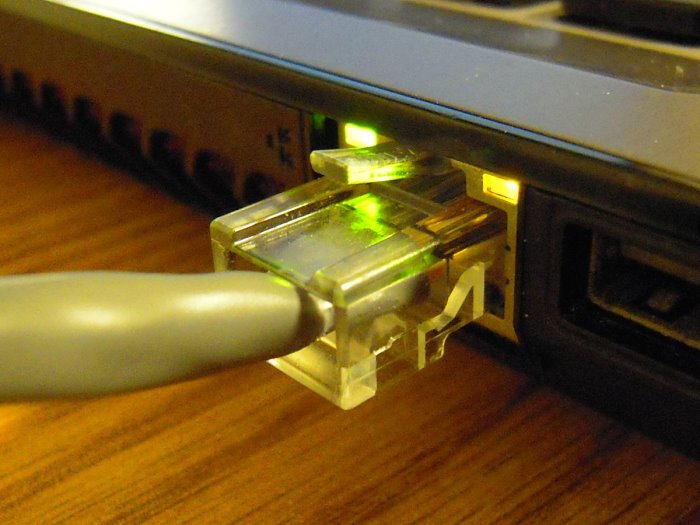
If one aims to attain seamless Internet without disruption, one should always opt for Ethernet cables. Also, if you share a WiFi connection with family or housemates, it might be hard to ask them to stop using the internet when you’re gaming. You can try playing games when they’re out or connecting your device to the router with an Ethernet cable. I would pick the latter option.
3] Set up the Ultimate Performance Power Plan
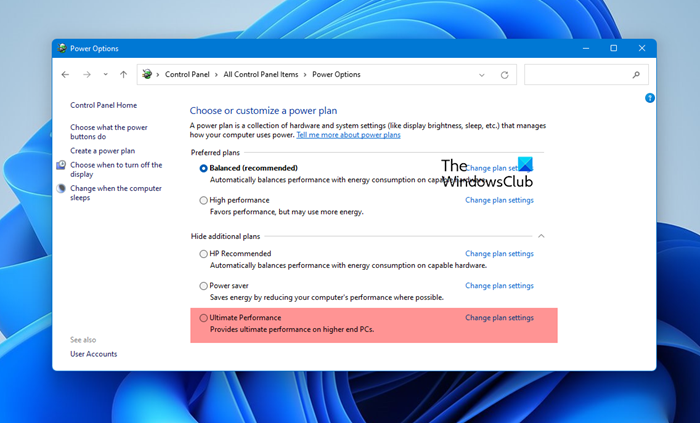
Microsoft created a mode to maximize hardware performance. By default, it’s available on workstations only and not on systems with a battery. Enabling it on devices with a battery will drain the battery faster. However, since most of us play the game when our device is plugged in, there is no harm in switching to Ultimate Performance Power mode. So, go ahead and enable the Ultimate Performance Plan.
4] Lock all Driver DPC to one core
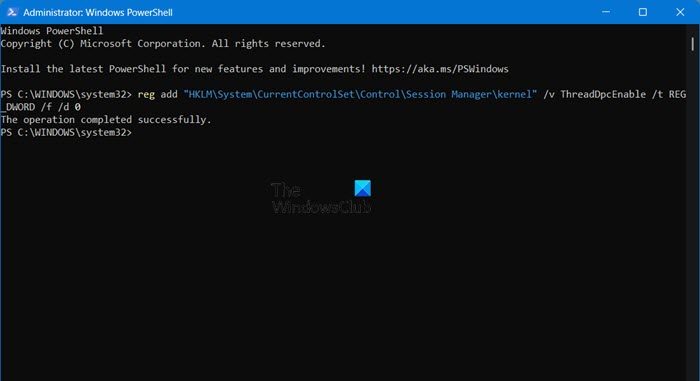
Locking all Driver Deferred Procedure Calls (DPCs) to a single core can help manage DPC latency issues, especially in systems where certain drivers cause high latency. To tweak DPC, we will make changes to your registry, therefore, take a backup of it beforehand.
To do so, open PowerShell as an administrator and then run the following command.
reg add "HKLM\System\CurrentControlSet\Control\Session Manager\kernel" /v ThreadDpcEnable /t REG_DWORD /f /d 0
Consider lowering mouse sensitivity in games if it’s set to 5 or higher. However, you may still encounter issues with mice that have built-in acceleration, causing difficulties in making precise adjustments. This can be identified by using a mouse without built-in acceleration.
4] Force your CPU to run at full throttle at all times
Even though it is not recommended, if you have a decent cooling system, you can enable it when gaming. Once you are done gaming, you can disable it. Also, we would recommend you refrain from enabling it on a laptop, as their cooling systems are usually fragile. That being said, open PowerShell as an administrator and then run the following commands (one by one) to enable this feature.
powercfg.exe /setacvalueindex SCHEME_CURRENT SUB_PROCESSOR IdleDisable 1 powercfg.exe /setactive SCHEME_CURRENT
To disable it, run the below command.
powercfg.exe /setacvalueindex SCHEME_CURRENT SUB_PROCESSOR IdleDisable 0 powercfg.exe /setactive SCHEME_CURRENT
After making the changes, start your game and you will notice a difference.
5] Close all the network-consuming application

You can terminate all the apps and services that are not necessary but are consuming your network. This will allow your computer to channel all its bandwidth to ensure your games are not choppy. To do so, open the Task Manager, go to the Network tab, right-click on the apps that are high up there on the list, and select End Task.
6] Use NVIDIA Low Latency Mode
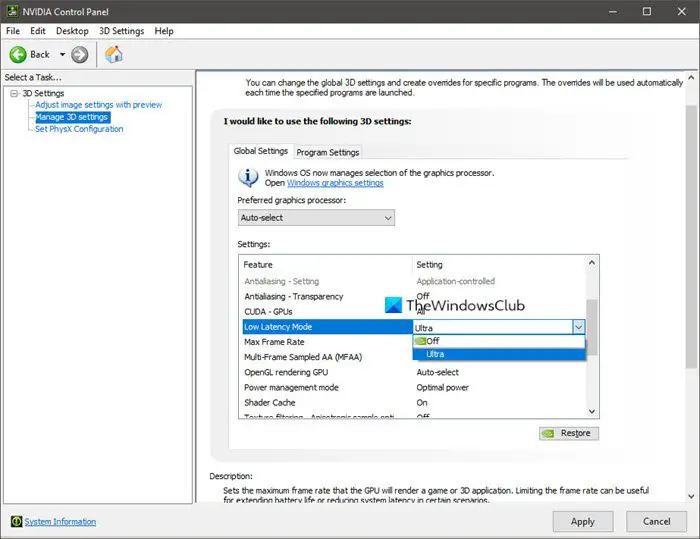
If you have an NVIDIA driver, you can look to enable NVIDIA Low Latency Mode. Low latency modes have the most impact when your game is GPU-bound and frame rates are between 60 and 100 FPS. Enabling this setting allows for high-frame-rate gaming responsiveness without sacrificing graphical fidelity. However, it won’t improve your experience if your game is CPU-bound or if you have very high or very low FPS. Additionally, if you’re experiencing input latency or mouse lag, this setting won’t solve that problem, as these issues are often a result of low frame rates (FPS).
That’s it!
Is 40 ms latency good for gaming?
Yes, a latency of 40ms is good for gaming. We aim for a low ping, as low as we can go. If that means gaming next to the router, so be it. However, we recommend you check the above suggestions to reduce gaming latency.
Read: Tips to improve Windows gaming performance
Why is my PC latency so high?
Various factors affect your computer’s latency. Mostly, your router’s bandwidth is either low or fluctuating, which is why you are experiencing high ping. You can optimize your PC for online gaming and follow the suggestions mentioned earlier to remedy the situation.
Also Read: Best AI Games for Windows 11.
Leave a Reply